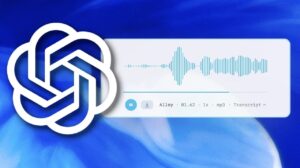Artificial Intelligence Highlights #15/2025: Meta’s Downfall, Claude’s Victory, and OpenAI’s New Accessibility

This Week in Artificial Intelligence: Key Updates
Meta’s Llama 4 Challenges
Meta, once a pioneer in AI innovation, faced setbacks with its latest model, Llama 4. This model was anticipated to be a breakthrough but turned out to disappoint. Reports indicated that the public version of Llama 4 performed significantly worse than earlier benchmarks. Professor Ethan Mollick highlighted discrepancies in the model’s initial results versus its public showing, casting doubt on Meta’s claims.
Former Meta employees, now working at OpenAI, took to platforms like Reddit to express their disillusionment, making it clear they want no association with the Llama series, underscoring a growing dissatisfaction with Meta’s AI direction. Furthermore, the performance of a lesser-known model, DeepSeek V3 from China, which surpassed Llama 4 in benchmarks, raised alarms within Meta, especially considering the billions invested in their AI sector.
Anthropic Launches Claude Max
Anthropic made waves with the introduction of Claude Max, a subscription service that caters to users requiring extensive interaction capabilities. This plan allows subscribers to access models with a significantly higher interaction quota and ensures priority for upcoming features. Amidst this launch, Jared Kaplan, the chief scientist at Anthropic, teased the arrival of Claude 4 in the next six months, suggesting rapid advancements in AI development outpacing hardware improvements, largely due to enhanced training techniques.
OpenAI Embraces Transparency
In a significant shift, Sam Altman of OpenAI announced plans to release an open-source model that promises to outperform existing alternatives. This decision comes after years of critiques regarding OpenAI’s lack of transparency. The latest version of ChatGPT will include long-term memory, enabling it to personalize user experiences based on past interactions and assist users in tracking their objectives.
Security Testing Concerns at OpenAI
Despite these advancements, alarming news emerged regarding OpenAI’s security protocols. According to the Financial Times, the company is shortening the duration and scope of security tests for its models. This hastened timeline raises concerns about potential undiscovered vulnerabilities in public releases, as demonstrated previously by issues found in GPT-4 shortly after its launch. Competitive pressures in the AI landscape appear to be pushing safety measures to the background.
New Competitors Emerge: DeepCode 14B
In the open-source space, DeepSeek and Aentica introduced DeepCode 14B, a model designed for generating programming code. Despite having only 14 billion parameters, DeepCode 14B rivaled commercial models like GPT-3.5. It was trained on over 24,000 unique tasks and utilized a performance-based reward system to achieve optimal results.
Innovating AI Browsing: BrowseComp
OpenAI also unveiled BrowseComp, a new benchmark aimed at evaluating AI agents’ capability to traverse the internet and retrieve intricate information efficiently. This benchmark assesses models programmed to sift through multiple web pages to find relevant data, enhancing their functionality in complex queries.
Google’s Multimodal Super Assistant
Google is actively merging its AI capabilities with the Gemini and Vio models to develop a multimodal super assistant. This new assistant aims to understand and integrate text, image, audio, and video seamlessly, signaling a leap towards creating AI that comprehends and interprets the world more like humans do.
Advances in AI Hardware
Moreover, Google announced the launch of new AI chips, the TPU Ironwood, which are said to be 3,600 times faster than their initial chip from 2018. This advancement is expected to support training larger models and executing them at unprecedented speeds, reducing reliance on competitors like Nvidia.
Microsoft’s Evolving Copilot
Microsoft’s Copilot has recently revamped its user interface, introducing features that assist with apartment searches, letter writing, and image editing. With real-time context awareness, Copilot is becoming a formidable personal assistant. Mustafa Suleyman of Microsoft believes we could see the emergence of Artificial General Intelligence (AGI) within five years, even while acknowledging ongoing challenges in AI reliability.
Midjourney’s Latest Release
Midjourney debuted v7 of its image model, showcasing remarkable hyperrealism in image generation. However, the company admits that text generation remains a lower priority, as user engagement has not met expectations.
Innovations in Robotics
The 1X Neo robotic platform demonstrated autonomous capabilities, performing tasks without human direction during a live presentation. Its design includes advanced artificial muscles, allowing it to navigate real-world environments safely.
Breakthrough in AI Research
Sakana AI Labs announced that their AI model successfully penned its first academic paper, which was approved through peer review. This achievement marks a significant milestone, showcasing AI’s potential to hypothesize, analyze data, and derive conclusions independently.
In the rapidly shifting landscape of artificial intelligence, these developments illustrate the incredible pace of change and innovation shaping the future of this technology. As companies race to enhance their offerings, the week ahead promises to unveil even more exciting updates in the world of AI.






